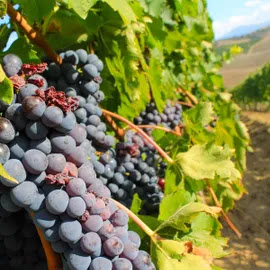Ugh! My 2021 vintage has high volatile acidity (VA). It smells of pressed sugarcane juice and nail varnish. While I have made wine with high VA in the past, they were all within the threshold to be bottled and enjoyed. But the prospect for this vintage is dim. Hopefully, the addition of sulfites (sometimes referred to as SO2) will salvage some of it.
Wait? Is sulfite the good guy now? What about VA? Let’s delve a little into the wine science.
What is VA?
VA is the measure of the volatile or gaseous acids in wine. The gaseous state of the acids is also the reason why VA can often be detected by smell. The aroma compounds that contribute to high VA in wine are primarily acetic acid (commonly known as vinegar) and secondarily ethyl acetate (associated with the smell of nail varnish). Oftentimes, the presence of VA is noticeable by the smell of nail varnish rather than that of vinegar.
A certain amount of VA is acceptable and sometimes desirable to add to the character of a wine. Some sweet wines, such as Amarone della Valpolicella and Sauternes, and even dry ones, like Barolo, often accumulate a high level of VA. If you see the descriptor “lifted” in tasting notes or wine reviews, that’s what it means. However, when the level of VA results in an overpowering and off-putting aroma, it becomes unpleasant and can result in wine spoilage.
VA is created by the activities of acetobacter. Acetobacter is a genus of acetic acid bacteria. It is widespread in nature and is responsible for creating vinegar, intentionally or otherwise. In winemaking, acetobacter can be found in bruised grapes, annoying fruit flies, winemaking equipment or anywhere in the cellar. Good sanitation practices, such as constant wiping down and cleaning with Star San, an acid-based sanitizer, is effective in limiting the presence of acetobacter.
SO2 versus VA
The reality is that it is nearly impossible to keep acetobacter out of the wine. The next layer of defense is to make the wine less conducive for bacterial activity. Acetobacter are aerobic organisms, which means they require oxygen to create havoc in the wine. Sulfite, an antioxidant, is often used to inhibit the microbial activity and growth. Yes, the much maligned sulfites are needed if you don’t want your wine to turn into vinegar.
Side note - How do natural wineries even make wine without adding sulfites? Maybe that is why natural wines often taste “interesting” and unpredictable!
Thankfully, modern science has crafted a formula to calculate the amount of sulfites needed for wine protection based on a number of parameters - such as pH and alcohol content. This hobby winemaker is just keeping up with it.
Geek alert - As a rule of thumb, I have always targeted 50 ppm of FSO2 (parts per million of free sulfur dioxide) in the absence of a lab test. When sulfites are added to the wine, some will bind to the chemicals in the wine and some will dissipate. FSO2 refers to the remaining sulfur dioxide that is “free” or available to protect the wine.
As a hobby winemaker, I don’t perform multiple tests on my wine, unlike a commercial winery that would test throughout fermentation and aging. Instead, I tend to do a single broad spectrum test closer to bottling. Well, that did not work very well when the final test results indicated that the wine was not stable nor stabilizing.
My wine pH was >4.0, a first for me. Based on the chart above, I would have needed more than twice the regular SO2 dose to protect the wine. Even though I was dosing to achieve 50ppm FSO2, the test results showed that my FSO2 level was only at 4ppm. No wonder my wine is suffering from high VA. Recovery from high VA this late in the game is incredibly challenging. So lessons learned!
My Verdict: Rules of thumb are great until they don’t work. Learning from my own mistakes, albeit painful, sticks better. The good thing about winemaking is that if one vintage fails, you get to do it all over again the next year. You bet I’m going to do things differently, like doing focused tests on the wine and paying more attention to pH. I plan to kick VA in the butt for this next vintage. Wish me luck!




























